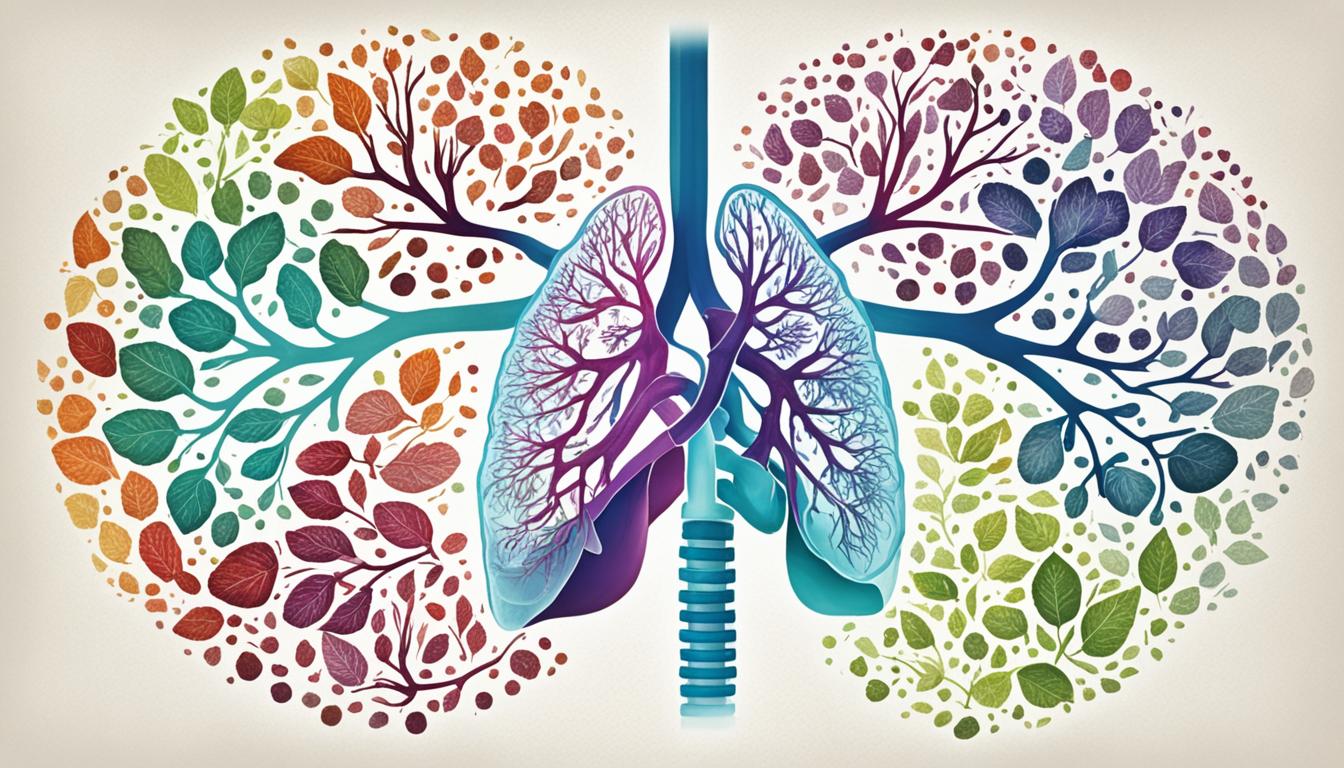Hepatopulmonary syndrome (HPS) is a rare but serious condition linked to liver issues. It mostly happens in people with cirrhosis. This lung condition makes it hard for the body to get enough oxygen.
Cirrhosis causes scarring in the liver, making it work improperly. The liver can’t remove toxins from the blood like it should. This leads to problems in many parts of the body, including the lungs. With HPS, blood vessels in the lungs get bigger. This is called intrapulmonary vascular dilatations (IPVDs).
These big blood vessels don’t let the lungs work right. So, there’s not enough oxygen in the blood. This condition is known as hypoxemia. It’s why people with HPS often feel short of breath, their lips might look blue, and their fingertips might swell.
Doctors look at both the liver and lung symptoms to diagnose HPS. They use tests like arterial blood gas analysis and special imaging. This helps them see if the oxygen level is too low and if there are lung blood flow issues.
If someone can get a new liver through a transplant, that’s the best treatment. It fixes the liver problem and helps the lungs get better. But, not everyone can have a liver transplant. For them, stem cell therapy may be useful. Stem cells can turn into many types of cells, including those in the lungs. This could help fix the lung damage in HPS.
In short, HPS is a problem where liver issues cause lung problems. It means the body doesn’t get enough oxygen. Doctors check for both liver and lung signs to diagnose it. The main treatments are liver transplant and possibly, stem cell therapy.
Key Takeaways:
- Hepatopulmonary syndrome (HPS) is a lung issue linked to liver problems and mostly seen in people with cirrhosis.
- It leads to difficulty in getting enough oxygen, causing hypoxemia.
- Typical signs of HPS are trouble breathing, blue skin or lips, and swelling of the fingertips.
- Tests for HPS focus on checking oxygen levels and looking for liver disease.
- Treatments include liver transplant and maybe, stem cell therapy.
Causes and Pathophysiology of Hepatopulmonary Syndrome
Hepatopulmonary syndrome (HPS) is a condition where lung blood vessels are not normal because of liver problems. It happens because the blood vessels get too wide, making it hard for oxygen to get into the blood. This leads to low oxygen levels in the body.
Vasodilatation, or the widening of blood vessels, is a big issue in HPS. There’s a problem with the body’s ability to balance chemicals that make vessels wide or narrow. This causes too much widening.
Nitric oxide (NO) is a key player in making the blood vessels too wide. It’s a gas that helps control how much blood vessels open up. In HPS, there’s too much NO, so blood vessels open up more than they should.
When blood vessels in the lungs get very wide, they can form big knots. These are like big hills in the blood flow paths. They make it hard for oxygen to get into the blood. That’s why people with HPS might feel short of breath.
A person with HPS has a tough time getting enough oxygen. This is because areas in the lungs where blood goes don’t match up with areas where air goes. Also, blood sometimes takes a shortcut and misses getting oxygen.
There’s more than one reason why oxygen levels drop in HPS. It’s like a puzzle of too-wide blood vessels, blocked paths for oxygen, and a thick layer stopping gas exchange. All these together make HPS a complex and serious condition.
Diagnosis and Treatment Options for Hepatopulmonary Syndrome
It’s key to pinpoint hepatopulmonary syndrome (HPS) for good care. Doctors often use a blood gas test to check how well oxygen moves. This test calculates the gap in oxygen between air sacs and blood vessels, hinting at any abnormal blood flow. This hints at any issues within the lungs’ blood vessels linked to HPS (arterial blood gas analysis, alveolar-arterial (A-a) oxygen gradient, right-to-left shunt fraction).
Doctors might also use a special heart ultrasound, with a contrast dye, to find certain blood flow issues in the lungs. It gives a clearer picture of lung blood vessel expansion and unusual blood flow (contrast-enhanced echocardiography). Other tests, like certain scans and looking directly into the lung’s blood vessels, can also help tell the problem more thoroughly (macro aggregated albumin scanning, pulmonary angiography).
Liver transplant is often the best move for those with serious liver and HPS issues. It can fix the liver and lung issues, helping with oxygen levels and life quality. If a transplant isn’t an option, stem cell treatment is something to consider. By repairing lung damage, it aims to breathe new life into lung function (liver transplantation, stem cell therapy).

